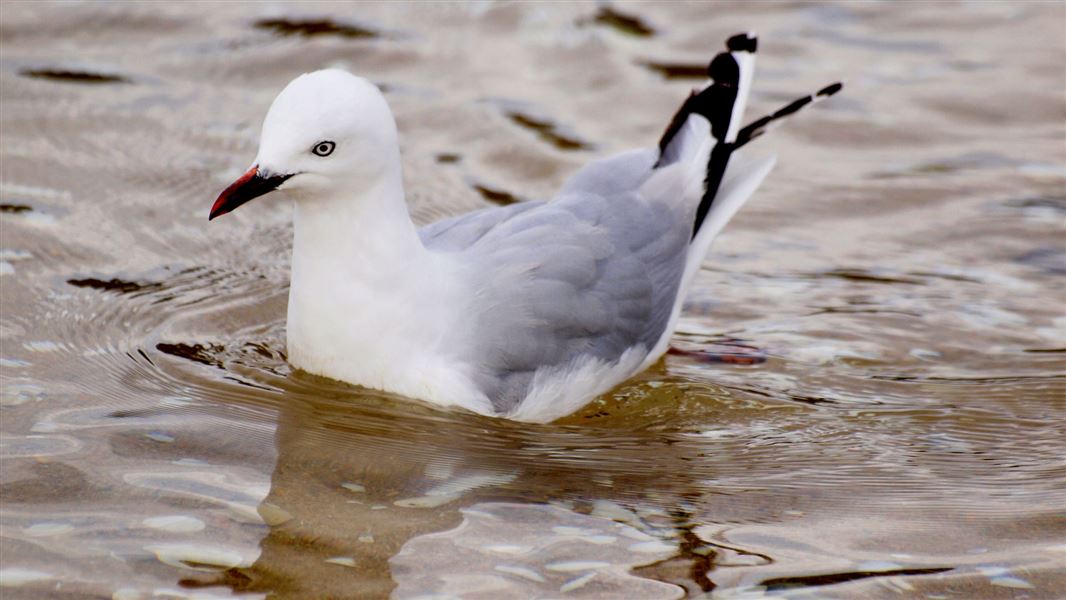Most of the gulls here are red-billed gulls (Larus novaehollandiae), or tarāpunga in Māori.
On wet grass, or at the water's edge, they are often seen 'dancing' on the spot, paddling the ground to draw worms and other invertebrates to the surface to be eaten.
Look out for the UrbanNature red-billed gulls panel at the Molars in Dunedin.
Video
Red-billed gulls might be keen to eat your left-overs, but didn't evolve to eat our high-energy, low-nutrient sandwich crusts or chips. They would find a healthier meal out on the water feeding on schools of krill, at the water's edge eating crabs and fish, or on land eating worms and insects.
Studies of the big red-billed gull colony at Kaikoura show that breeding success and colony size has decreased markedly over the last 20 years. Scientists think this decline is due to changes in the ocean's currents that have reduced the amount of cool, nutrient-rich water welling up near Kaikoura. This has led to less of the krill that the birds feed on.
In contrast, red-billed gull numbers have increased around Dunedin. This is thought to be due to a combination of predator control around the nesting colonies, and cooler water off the Otago coast bringing more nutrients and food (especially krill and munida, or 'squat lobsters') for the gulls to eat.
Rare as kiwi?
Are these gulls really as rare as kiwi? While this might sound unlikely, the answer lies in how the Department of Conservation, along with other experts, determines how rare, or 'threatened' a species is.
Using the New Zealand Threat Classification System, each native species is assessed every few years against criteria such as how many of it are left, is it increasing or decreasing in number, over what area can it be found, and are any changes due to natural processes or the impacts of people.
Although red-billed gulls are reasonably numerous, their numbers are decreasing at an alarming rate and so they are considered to be 'Nationally Vulnerable'. Three species of kiwi (Fiordland tokoeka, great spotted and North Island brown) are in the same category, because although their numbers are lower, they are not declining as quickly.
Black-billed gulls spend the summer inland, but might be seen here in winter. They're slightly smaller than red-billed gulls, and have black, as opposed to red, bills and legs. Unfortunately, black-billed gulls are classified as 'Nationally Critical' – the most threatened category in the country and the same one that kakapo and takahe are in.
Did you know?
- Red-billed gulls are faithful to their partner and nest site; successful pairs tend to stay together and nest in the same place year after year.
- Birds like the yellow-eyed penguin are one of Otago's best known threatened species, but there are 11 species of native fish in Otago alone that are just as (or even more) threatened!
